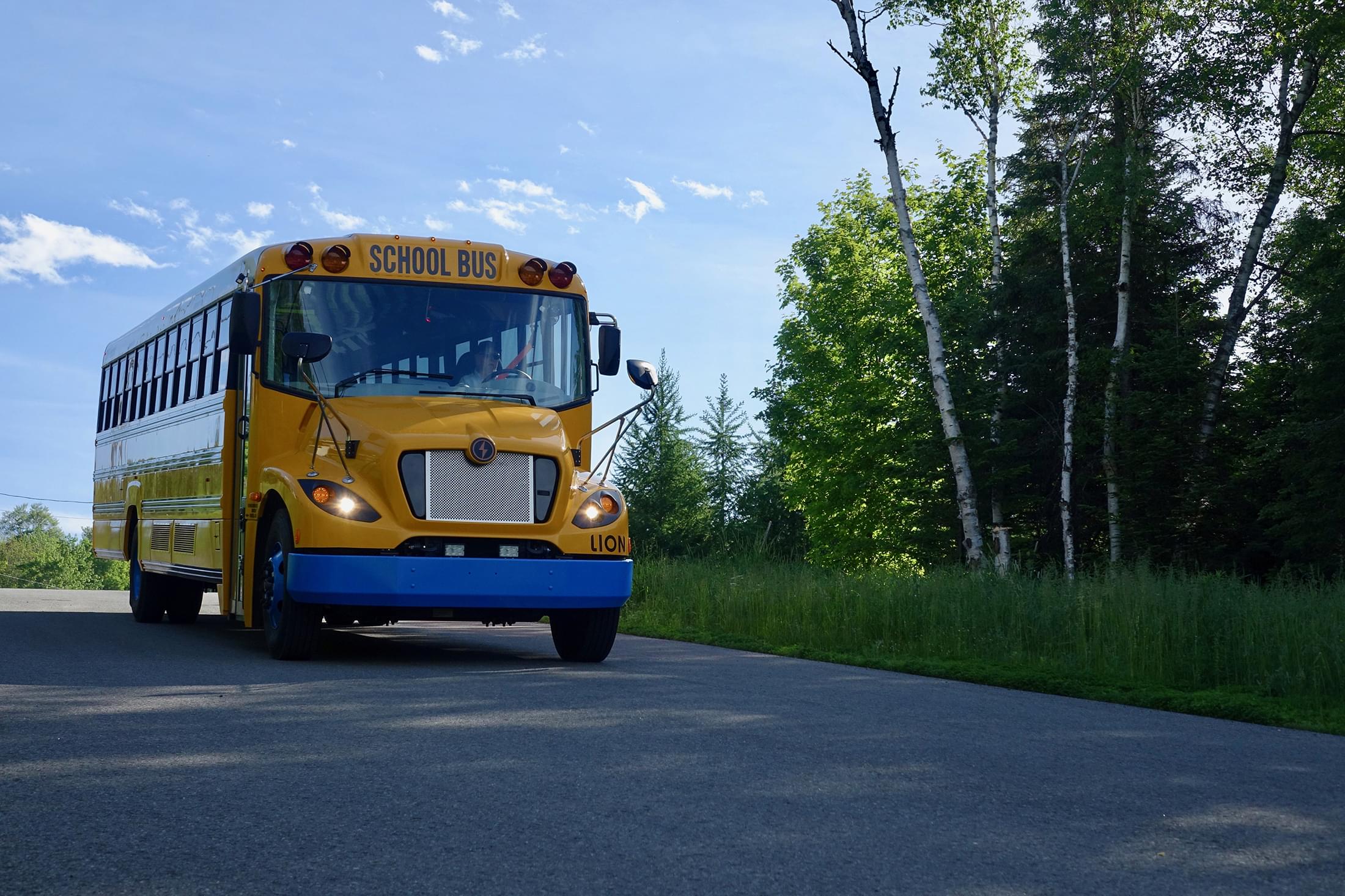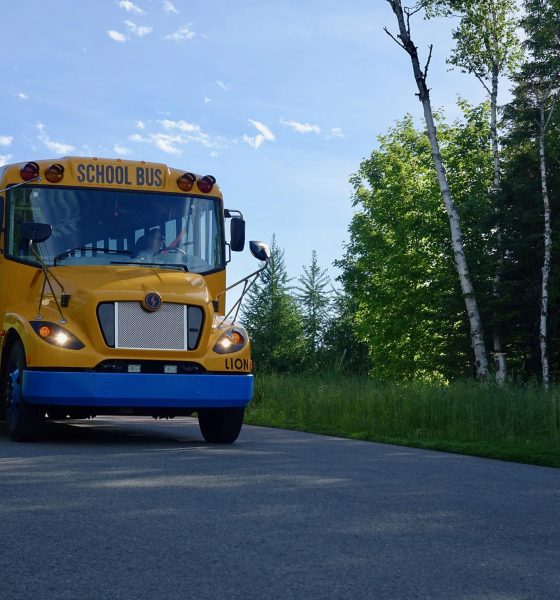The U.S. state of Illinois has been granted almost $20 million to help several areas transition to electric school buses, as part of a program within President Joe Biden’s Inflation Reduction Act (IRA).
The Illinois State Board of Education (ISBE) announced on Friday that it has been awarded $19.9 million to purchase and deploy 70 electric school buses and to construct additional electric vehicle (EV) charging infrastructure, as detailed in a press release. The funding comes from the IRA’s Clean Heavy-Duty Vehicles Grant Program, allowing the state to deploy replace retired internal combustion engine (ICE) buses with electric versions across nine Illinois school districts.
In addition to deploying the electric buses under the Environmental Protection Agency (EPA) grant, the state plans to use the funding to help build charging stations for the electric vehicles (EVs), along with providing workforce training to help service and support the tech as it rolls out. Additionally, the ISBE will be able to hire two full-time staff members to help support the implementation of the grant and to work with school districts on additional clean energy programming.
RELATED: Michigan gets funding for electric school buses in eight districts
“With this funding, we’re building on our progress toward a more sustainable future by providing nine school districts with the resources to advance our clean energy goals,” says Illinois Governor JB Pritzker. “Through the Clean Heavy-Duty Vehicles Duty Grant program, these districts will receive electric school buses, charging infrastructure, and workforce training — reducing harmful emissions and improving air quality. Thanks to our federal and local partners, we’re creating healthier and cleaner environments for students and communities across the state.”
The release also details that the EPA reports as many as 3 million Class 6 and Class 7 vehicles are currently being used in the U.S., many of which emit high levels of a combination of greenhouse gases, fine particulates, nitrogen oxides, and other harmful gases.
“Clean transportation solutions not only create healthier living and learning environments for our students but also save money for our school districts and taxpayers,” writes Dr. Tony Sanders, State Superintendent of Education. “I am proud of our staff here at the Illinois State Board of Education for winning this competitive grant and securing this valuable investment in Illinois’ clean energy future.”
The first Illinois school districts to get electric buses
- Forest Park School District 91: 5 school buses
- Franklin Park School District 84: 3 school buses
- Hazel Crest School District 152.5: 1 school bus
- Joliet Township High School District 204: 10 school buses
- Lincolnshire-Prairie View District 103: 4 school buses
- Marengo Union Elementary CSD 165: 2 school buses
- Township High School District 113 (Highland Park): 3 school buses
- Troy Community Consolidated School District 30-C: 32 school buses
- Zion-Benton Township High School District 126: 10 school buses
Along with the nine districts getting funding through the ISBE grant, three other Illinois school districts were awarded direct funding through the EPA’s Clean Heavy-Duty Vehicles Grant Program, according to the release. These include Grayslake Community Consolidated School District 46, North Chicago CUSD 187, and Zion Elementary School District 6.
What are your thoughts? Let me know at zach@teslarati.com, find me on X at @zacharyvisconti, or send us tips at tips@teslarati.com.
California EV adoption driving steady decline in emissions: study
Need accessories for your Tesla? Check out the Teslarati Marketplace:

News
Elon Musk’s Grokipedia surges to 5.6M articles, almost 79% of English Wikipedia
The explosive growth marks a major milestone for the AI-powered online encyclopedia, which was launched by Elon Musk’s xAI just months ago.

Elon Musk’s Grokipedia has grown to an impressive 5,615,201 articles as of today, closing in on 79% of the English Wikipedia’s current total of 7,119,376 articles.
The explosive growth marks a major milestone for the AI-powered online encyclopedia, which was launched by Elon Musk’s xAI just months ago. Needless to say, it would only be a matter of time before Grokipedia exceeds English Wikipedia in sheer volume.
Grokipedia’s rapid growth
xAI’s vision for Grokipedia emphasizes neutrality, while Grok’s reasoning capabilities allow for fast drafting and fact-checking. When Elon Musk announced the initiative in late September 2025, he noted that Grokipedia would be an improvement to Wikipedia because it would be designed to avoid bias.
At the time, Musk noted that Grokipedia “is a necessary step towards the xAI goal of understanding the Universe.”
Grokipedia was launched in late October, and while xAI was careful to list it only as Version 0.1 at the time, the online encyclopedia immediately earned praise. Wikipedia co-founder Larry Sanger highlighted the project’s innovative approach, noting how it leverages AI to fill knowledge gaps and enable rapid updates. Netizens also observed how Grokipedia tends to present articles in a more objective manner compared to Wikipedia, which is edited by humans.
Elon Musk’s ambitious plans
With 5,615,201 total articles, Grokipedia has now grown to almost 79% of English Wikipedia’s article base. This is incredibly quick, though Grokipedia remains text-only for now. xAI, for its part, has now updated the online encyclopedia’s iteration to v0.2.
Elon Musk has shared bold ideas for Grokipedia, including sending a record of the entire knowledge base to space as part of xAI’s mission to preserve and expand human understanding. At some point, Musk stated that Grokipedia will be renamed to Encyclopedia Galactica, and it will be sent to the cosmos.
“When Grokipedia is good enough (long way to go), we will change the name to Encyclopedia Galactica. It will be an open source distillation of all knowledge, including audio, images and video. Join xAI to help build the sci-fi version of the Library of Alexandria!” Musk wrote, adding in a later post that “Copies will be etched in stone and sent to the Moon, Mars and beyond. This time, it will not be lost.”
News
Tesla Model 3 becomes Netherlands’ best-selling used EV in 2025
More than one in ten second-hand electric cars sold in the country last year was a Tesla Model 3.

The Tesla Model 3 became the most popular used electric car in the Netherlands in 2025, cementing its dominance well beyond the country’s new-car market.
After years at the top of Dutch EV sales charts, the Model 3 now leads the country’s second-hand EV market by a wide margin, as record used-car purchases pushed electric vehicles further into the mainstream.
Model 3 takes a commanding lead
The Netherlands recorded more than 2.1 million used car sales last year, the highest level on record. Of those, roughly 4.8%, or about 102,000 vehicles, were electric. Within that growing segment, the Tesla Model 3 stood far ahead of its competitors.
In 2025 alone, 11,338 used Model 3s changed hands, giving the car an 11.1% share of the country’s entire used EV market. That means more than one in ten second-hand electric cars sold in the country last year was a Tesla Model 3, Auto Week Netherlands reported. The scale of its lead is striking: the gap between the Model 3 and the second-place finisher, the Volkswagen ID3, is more than 6,700 vehicles.
Rivals trail as residual values shape rankings
The Volkswagen ID.3 ranked a distant second, with 4,595 used units sold and a 4.5% market share. Close behind was the Audi e-tron, which placed third with 4,236 registrations. As noted by Auto Week Netherlands, relatively low residual values likely boosted the e-tron’s appeal in the used market, despite its higher original price.
Other strong performers included the Kia Niro, the Tesla Model Y, and the Hyundai Kona, highlighting continued demand for compact and midsize electric vehicles with proven range and reliability. No other model, however, came close to matching the Model 3’s scale or market presence.
News
Tesla Model Y Standard Long Range RWD launches in Europe
The update was announced by Tesla Europe & Middle East in a post on its official social media account on X.

Tesla has expanded the Model Y lineup in Europe with the introduction of the Standard Long Range RWD variant, which offers an impressive 657 km of WLTP range.
The update was announced by Tesla Europe & Middle East in a post on its official social media account on X.
Model Y Standard Long Range RWD Details
Tesla Europe & Middle East highlighted some of the Model Y Standard Long Range RWD’s most notable specs, from its 657 km of WLTP range to its 2,118 liters of cargo volume. More importantly, Tesla also noted that the newly released variant only consumes 12.7 kWh per 100 km, making it the most efficient Model Y to date.
The Model Y Standard provides a lower entry point for consumers who wish to enter the Tesla ecosystem at the lowest possible price. While the Model 3 Standard is still more affordable, some consumers might prefer the Model Y Standard due to its larger size and crossover form factor. The fact that the Model Y Standard is equipped with Tesla’s AI4 computer also makes it ready for FSD’s eventual rollout to the region.
Top Gear’s Model Y Standard review
Top Gear‘s recent review of the Tesla Model Y Standard highlighted some of the vehicle’s most notable features, such as its impressive real-world range, stellar infotainment system, and spacious interior. As per the publication, the Model Y Standard still retains a lot of what makes Tesla’s vehicles well-rounded, even if it’s been equipped with a simplified interior.
Top Gear compared the Model Y Standard to its rivals in the same segment. “The introduction of the Standard trim brings the Model Y in line with the entry price of most of its closest competition. In fact, it’s actually cheaper than a Peugeot e-3008 and costs £5k less than an entry-level Audi Q4 e-tron. It also makes the Ford Mustang Mach-E look a little short with its higher entry price and worse range,” the publication wrote.










